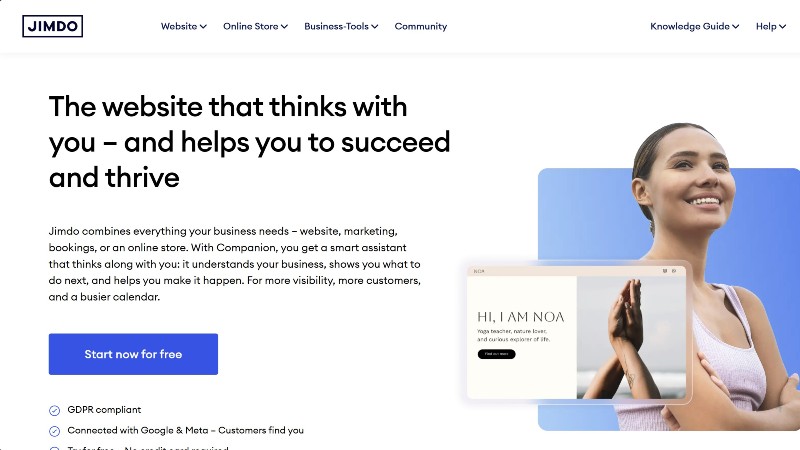- Pro
The operational dimensions of adopting AI
Comments (0) ()When you purchase through links on our site, we may earn an affiliate commission. Here’s how it works.
 (Image credit: AI)
(Image credit: AI)
In today’s climate, business leaders no longer ask whether they should adopt AI because that’s already happening.
Across industries we’re seeing organizations that are integrating AI tools into their processes achieving notable benefits, such as enhanced efficiency and a variety of improved business outcomes.
- Amazon Black Friday deals are live: here are our picks!
-
 Most companies still lag behind on AI targets—how can they catch Up?
Most companies still lag behind on AI targets—how can they catch Up?
-
 From buzzword to bottom line: 4 ways AI delivers ROI
From buzzword to bottom line: 4 ways AI delivers ROI
-
 What technology leaders need to ensure AI delivers
What technology leaders need to ensure AI delivers
EMEA Field CTO at Apptio, an IBM Company.
For many organisations, the real dilemma is balance: how to stay competitive in the AI era while managing costs, resourcing and intellectual property.
Frequently, AI-driven projects are initiated from the business units themselves, and they work with IT to deliver it.
Yet many still lack the information needed to evaluate technology spend decisions properly. That gap between growing costs and unclear ROI is now shaping boardroom debates across industries.
The conversation has shifted from “what can AI do?” to “what value is it delivering, and at what cost?” to “are we trying to use AI on the right kinds of projects?”
Are you a pro? Subscribe to our newsletterContact me with news and offers from other Future brandsReceive email from us on behalf of our trusted partners or sponsorsBy submitting your information you agree to the Terms & Conditions and Privacy Policy and are aged 16 or over.Managing trade-offs without cutting muscle
Scaling AI requires careful trade-offs, not just in trimming budgets, but in deciding where to reallocate resources without disrupting core business operations.
The key to making these decisions lies in achieving visibility. Many organizations rely on ROI as a guiding metric for investment decisions or cost-benefit analysis.
However, these metrics often operate in silos, communicated differently across finance, IT, and operations. As a result, many organizations stop evaluating ROI once a project is underway, making it difficult to accurately track and realize the full value of AI investments.
You may like-
 Most companies still lag behind on AI targets—how can they catch Up?
Most companies still lag behind on AI targets—how can they catch Up?
-
 From buzzword to bottom line: 4 ways AI delivers ROI
From buzzword to bottom line: 4 ways AI delivers ROI
-
 What technology leaders need to ensure AI delivers
What technology leaders need to ensure AI delivers
A single taxonomy and shared data source is essential. Otherwise, leaders can end up talking past each other: finance worrying about capital expenditure versus operational while IT measures utilization rates and uptime.
When measuring the value delivered by AI, it needs to be translated into business metrics that show the cost against the business outcomes being achieved.
With generative AI workloads notoriously compute and energy-hungry, forecasting spend precisely is already a challenge. Businesses need a unified view to decide where to cut, where to double down, and how to ensure AI projects align with strategic goals.
Counting the real costs of AI
Unlike past technology rollouts, AI is not a simple one-time capital investment. Data from Apptio shows that over 90% of organizations expected technology budgets to rise this year, with AI one of the most significant new spend drivers and I expect we’ll see similar sentiments going into 2026.
It brings continuous costs in IT infrastructure, energy, people, and processes. Training models and running inference requires massive compute power, often hosted in energy intensive data centers. Specialist AI talent is scarce and expensive. And all the while, boards are asking how these outlays translate into measurable ROI.
AI serves diverse functions within organizations, including data analysis, process automation and fraud detection or cybersecurity. While these are highly impactful applications, scaling them requires absolute clarity about costs and benefits. Leaders need to distinguish between the spend involved in training large foundation models versus embedding third-party services into existing processes.
Here, Technology Business Management (TBM) frameworks can help. By linking IT spend directly to business outcomes, leaders can spot waste, prioritize high-value projects, and prevent AI from repeating the same overspend patterns many businesses encounter with the cloud.
Rethinking Data
Where data should live has become one of the most pressing questions when scaling AI projects. Boards are increasingly nervous about intellectual property loss, regulatory compliance, and the risks of feeding sensitive datasets into third-party systems.
The cloud remains indispensable for scalability, but there is growing recognition that not every workload belongs there. Some companies are pulling specific processes back on-premises to regain predictability, strengthen compliance, and control long-term costs.
This isn’t about turning away from the cloud; it’s about using it more strategically. A hybrid approach - balancing cloud agility with on-premises control - is fast becoming the default.
Final takeaways for business leaders
AI is here for the long haul, but success depends on treating it with the same discipline as any other strategic investment. Four principles stand out:
1. Prioritizing visibility: If businesses don’t take stock of how many investments are being made and how projects are performing, AI spend can increase but with limited ROI.
2. Taking a hybrid approach: Cloud strategies are not a one size fits all; by looking at hybrid models, IT teams can still benefit from scalability but also secure and retain control over data.
3. Staying on top of costs: Implementing AI is not a static cost; there are many elements that need to be continuously monitored and reviewed. By factoring these in early, businesses can better control spend.
4. Looking at the full picture: Teams must ask themselves, are we linking IT investments to measurable business outcomes? Value isn’t just money saved, its increased productivity, better decision making and customer outcomes. It’s important that business leaders look at the full spectrum when measuring success and reward initiatives that do deliver.
The goal of any technology leader is to make tech investment decisions that deliver value and help support wider business objectives. Whether AI, cloud, or any other innovation, that goal never changes.
With many more innovative projects expected, technology, business and finance leaders will need to partner closely to prove value and increase internal expertise.
On the road to AI ROI, the most successful companies will be those that know how to manage trade-off, invest pragmatically and smartly manage data.
Check out the best IT automation software.
This article was produced as part of TechRadarPro's Expert Insights channel where we feature the best and brightest minds in the technology industry today. The views expressed here are those of the author and are not necessarily those of TechRadarPro or Future plc. If you are interested in contributing find out more here: https://www.techradar.com/news/submit-your-story-to-techradar-pro
TOPICS AI Greg HolmesSocial Links NavigationEMEA Field CTO at Apptio, an IBM Company.
You must confirm your public display name before commenting
Please logout and then login again, you will then be prompted to enter your display name.
Logout Read more Most companies still lag behind on AI targets—how can they catch Up?
Most companies still lag behind on AI targets—how can they catch Up?
 From buzzword to bottom line: 4 ways AI delivers ROI
From buzzword to bottom line: 4 ways AI delivers ROI
 What technology leaders need to ensure AI delivers
What technology leaders need to ensure AI delivers
 How big businesses are handling the roll out of Generative AI
How big businesses are handling the roll out of Generative AI
 Too many AIs, too little progress: the sprawl stalling business success
Too many AIs, too little progress: the sprawl stalling business success
 AI hype vs. business reality: the race to meaningful implementation
Latest in Pro
AI hype vs. business reality: the race to meaningful implementation
Latest in Pro
 Jimdo adds AI to its website builder, promises better business outcomes
Jimdo adds AI to its website builder, promises better business outcomes
 Perplexity responds to Comet browser vulnerability claims, argues "fake news"
Perplexity responds to Comet browser vulnerability claims, argues "fake news"
 D-Link routers under threat from dangerous flaw - here's how to stay safe
D-Link routers under threat from dangerous flaw - here's how to stay safe
 Second-order prompt injection can turn AI into a malicious insider
Second-order prompt injection can turn AI into a malicious insider
 Too good to be true? Be careful when looking through those Black Friday offers - they might be a scam
Too good to be true? Be careful when looking through those Black Friday offers - they might be a scam
 A glimpse into the next decade of connectivity: 4 lessons from Yotta 2025
Latest in Opinion
A glimpse into the next decade of connectivity: 4 lessons from Yotta 2025
Latest in Opinion
 Elon Musk on the future of jobs and AI, 'My prediction is that work will be optional'
Elon Musk on the future of jobs and AI, 'My prediction is that work will be optional'
 What is data governance and why is it crucial for successful AI projects?
What is data governance and why is it crucial for successful AI projects?
 Harmonizing AI innovation with cost, risk & ROI
Harmonizing AI innovation with cost, risk & ROI
 Bridging the real digital gap in the public sector
Bridging the real digital gap in the public sector
 How AI is turning travel & expense into a strategic advantage
How AI is turning travel & expense into a strategic advantage
 How cloud-based technology is helping contact centers cut carbon emissions
LATEST ARTICLES
How cloud-based technology is helping contact centers cut carbon emissions
LATEST ARTICLES- 1I tested Samsung’s Dolby Atmos soundbar and sub combo, and it’s still the best mid-range model on the market
- 2This pioneering instant messaging platform tried to keep up with the times - we take a closer look at why ICQ failed
- 3Perplexity responds to Comet browser vulnerability claims, argues "fake news"
- 4Microsoft is hoping to kill off its most embarrassing BSOD errors for good - farewell to big-screen outages in the wild
- 5'I do hope and pray that at some point...there's a character that I would make sense for James [Gunn] to put me back into something,' says Polka-Dot Man's David Dastmalchian



